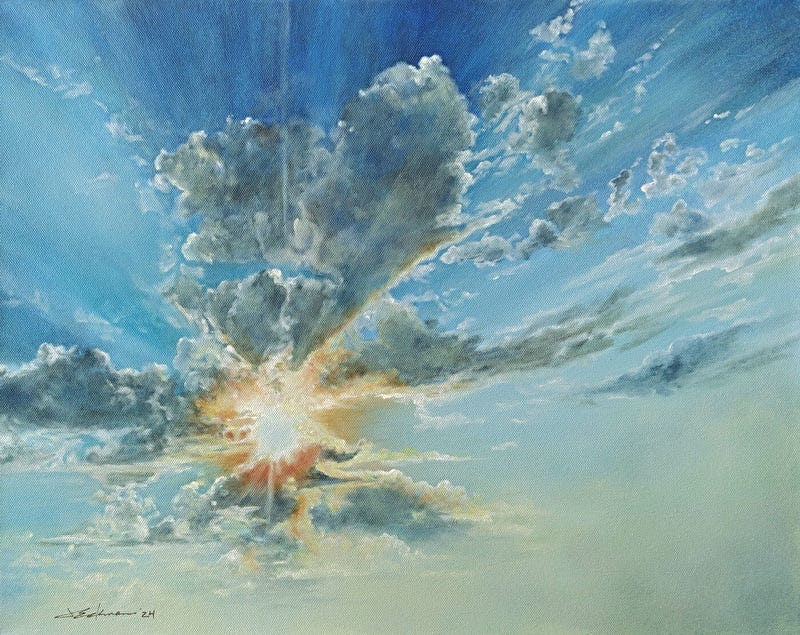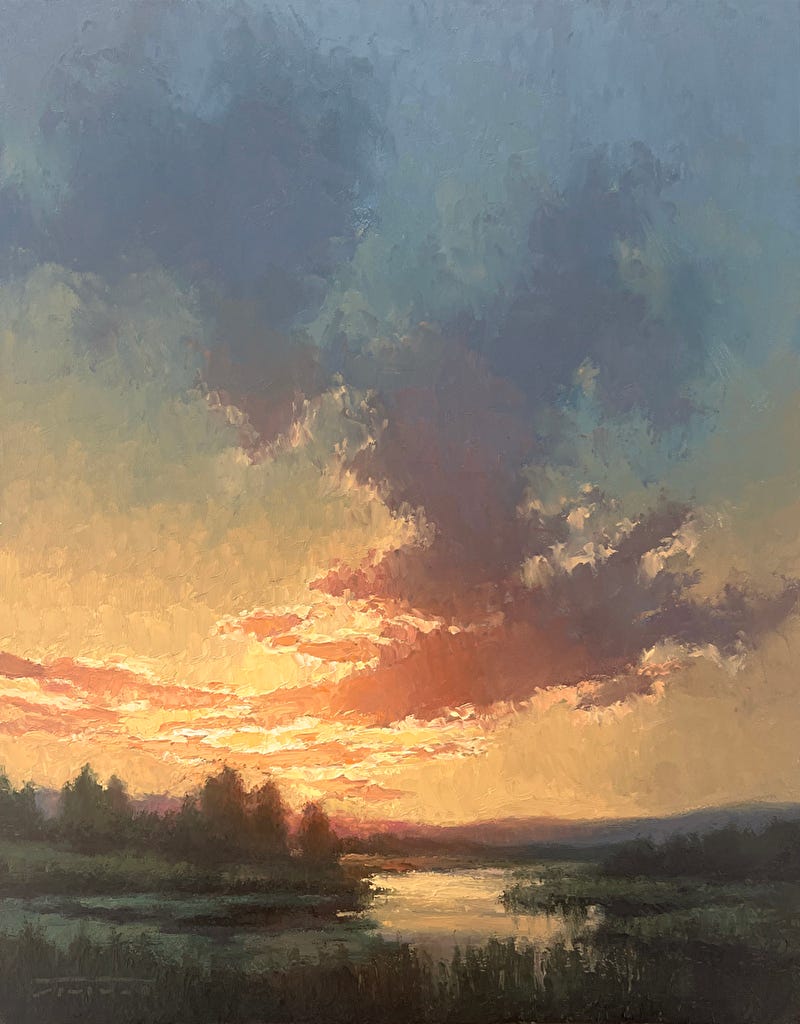Lovers of the Infinite: How Art Fits Everything Together
When we read a good story, we always re-cognize (know again). We recognize what’s already there. Unless a story elicits this recognition, it must have been invented – contrived.
We have another post today by Eugene Terekhin, the man and the mind behind the publication Philosophy of Language.
We’re pleased to announce that Eugene is now a regular contributing writer to The BoldBrush Letter.
Lovers of the Infinite: How Art Fits Everything Together

Ordinary people are extraordinary – because they are lovers. They are amateurs (from Latin amor – love), not professionals. They love, and that’s why they are capable of creating. What is not loved, cannot be created – it can only be constructed.
“The whole difference between construction and creation is exactly this: that a thing constructed can only be loved after it is constructed; but a thing created is loved before it exists.” — Charles Dickens
Constructed reality is artificial. It lacks the Love and Life that all mystics delight in, because they tread on earth and wander in Faërie at the same time.
“The ordinary man has always been sane because the ordinary man has always been a mystic. He has permitted the twilight. He has always had one foot in earth and the other in fairyland.” — G.K. Chesterton
Ordinary people permit twilight. They don’t dissect or deconstruct it. Gazing at a beautiful sunset, they may very well understand that it is caused by particles of light scattered throughout the atmosphere at a certain angle. And yet, they know they are seeing twilight. They permit things to be what they are: whole.
They are mystics; in the scattering of light, they see a marriage between heaven and earth. For them, there is no contradiction. True artists are ordinary men and women – and extraordinary mystics. They permit things to be what they are – whole. The delight in seeing things connected – without needing to take them apart.
Incidentally, if you explore the etymology of the word “art,” you will find that its Proto-Indo-European root ar- or arə- means “to fit together, join, assemble.” An artist is someone who, first and foremost, sees and perceives connections between things. To see the world as fragmented, disjointed, and unrelated is, in a sense, anti-art.
Words like “article,” “artisan,” and “artifact” all carry this same root. Each points to something crafted or joined together with intention. An article becomes art when, through reading it, we begin to see how things relate. If something is artisan, it awakens our perception – (aesthetics, from the Greek aisthēsis, meaning perception) – and reveals a hidden harmony within the thing itself.
In fact, the very nature of art is to reveal hidden harmony. The word harmony itself hides the same root. The Greek harmonia literally means “fitting together” – joining parts into a whole. Harmony is a deep spiritual mystery. When we feel disconnected from ourselves, from others, or from God, there is no harmony in our hearts – and thus, no true art. Something within us has become disjointed.
We feel inner conflict when something within us is divided – when we are split in two. Harmony, as art, returns when we let go of a false identity – some part of us where we keep grasping for control – and regain a holistic vision. Divine harmony manifests only when we stop seeing ourselves as separate from the Whole.
Interestingly, when Bilbo Baggins – nudged by Gandalf – finally let go of the Ring of Power, he took a deep breath, his eyes sparkled, and he said with a sigh of relief:
“I have thought of an ending for my book: ‘And he lived happily ever after to the end of his days.’”
Art returns to the heart only after we have renounced our idols and recovered our wholeness. It reveals itself as inner harmony and overflows in acts of creation – where we reveal how all things are connected.
It might be a fitting ending to a story, a well-crafted article, a handmade, artisan table, a lovingly prepared meal, or even a quiet conversation with a friend over a cup of freshly brewed coffee. Art joins things together – in a marriage between heaven and earth.
Subscribe to Philosophy of Language
By Eugene Terekhin
Philologist, philosopher, translator, and author Eugene Terekhin explores in Philosophy of Language the secret literary theory behind the fantasy worlds of J.R.R. Tolkien, C.S. Lewis, and Owen Barfield who believed that when words are spoken aright, they invoke the invisible reality from behind the veil of the world. He is a voice of much needed wisdom in our day and age, when so much of true art is being eviscerated and trivialized.
Eugene is the author of the following books and I have read three of his books and highly recommend them:
and The New Exodus: Escaping One Man’s War
We urge you to subscribe to Eugene’s insight-packed newsletter filled with the wisdom of the inklings, poets, philosophers, writers and great thinkers by clicking the button below:
FASO Loves Sarah Yeoman’s watercolor paintings!
See More of Sarah Yeoman’s art by clicking here.
Wouldn’t You Love to work with a website hosting company that actually promotes their artists?
As you can see, at FASO, we actually do, and,
we are the only website host we know of that does.
Click the button below to start working
with an art website host that actually cares about art.




Right on! Well written. Inspiring.
Beautiful. Thank you :)